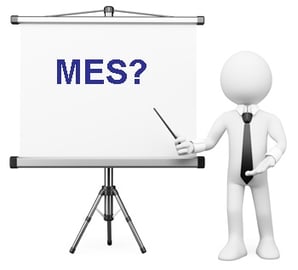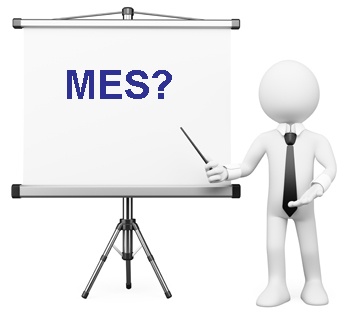4 Ways You Can Attract and Retain Skilled Manufacturing Workers
As the demand for manufacturing increases, the need for a skilled workforce will grow, but many companies are doing little to address the problem. ...
3 min read
David Oeters : August 26, 2014 at 6:57 AM

Okay… some good news… Manufacturing in America is coming back.
 Reshoring has become an industry buzzword as overseas costs rise and companies see opportunity in America. At the beginning of 2014, more than 200 companies had already returned to America. They’ve found advantages to working in America, including lower energy and shipping costs, greater innovation, and protecting intellectual property.
Reshoring has become an industry buzzword as overseas costs rise and companies see opportunity in America. At the beginning of 2014, more than 200 companies had already returned to America. They’ve found advantages to working in America, including lower energy and shipping costs, greater innovation, and protecting intellectual property.
The forecast is looking even brighter - With manufacturing production growth forecast at 3.2% in 2014 and 4% in 2015, and not all of this growth is due to Reshoring. Currently, manufacturing output is on pace for an increase of 4.9% year over year.
Here’s the bad news… the problem is many companies are struggling to meet the market demand or capitalize on the opportunities.
Recent surveys report nine out of 10 manufacturers struggle to find skilled workers. In a survey by the ManPowerGroup, 64% of respondents said a lack of skilled labor resulted in productivity losses, directly impacting the bottom line and profitability. In addition, the survey reported skilled labor was the hardest job to fill, with nearly 60% of the respondents reporting a lack of skilled labor impacted company growth.
While a lack of skilled labor is having a negative impact now, the impact will be worse in the future. The Boston Consulting Group (BCG), reports a potential shortfall of 875,000 skilled workers in less than a decade.
The remedy to the skilled labor gap, according to the BCG, is aggressive recruitment and in-house training. As older workers retire, companies must find a way to both capture their knowledge and efficiently pass it on to a new generation of workers who can assume previous responsibilities and pick up new ones as technology changes.
The key is to take action now, before the skilled worker gap grows worse. That means reaching out to colleges and trade schools to ensure students have the experience manufacturing needs. Industry leaders and the government need to develop programs that synchronize the future industry requirements with the classes being taught now. Furthermore, manufacturers needs to develop in-house training programs and tools, including paperless manufacturing. Here’s a few of the ways MES and paperless manufacturing can help overcome the skilled labor crunch:
 By integrating competency models into the company culture. Implemented effectively, competency models will “… help organizations: 1) find and keep the best people, 2) enable better employee performance, and 3) improve business results,” according to the St. Charles Consulting Group. Competency models capture what people must do to effectively complete their work. A paperless manufacturing system is an important tool in manufacturing competency models, providing a foundation for capturing knowledge and skills through a library of approved planning incorporating existing best practices.
By integrating competency models into the company culture. Implemented effectively, competency models will “… help organizations: 1) find and keep the best people, 2) enable better employee performance, and 3) improve business results,” according to the St. Charles Consulting Group. Competency models capture what people must do to effectively complete their work. A paperless manufacturing system is an important tool in manufacturing competency models, providing a foundation for capturing knowledge and skills through a library of approved planning incorporating existing best practices.
Improve existing worker skills through verification and validation of all operations. Using the process enforcement features of a full-featured MES or paperless system, you can ensure employees have the correct certification before they begin work, or ensure work is completed as planned through automatic tolerance checks, validation and data collection.
Develop new worker training through online video training, available with all work instructions, developing skills using an effective and cost-efficient method that minimizes shop floor disruption. According to a study by the US Department of Labor, 83% of all learning is done visually, and incorporating visual work instructions and on-demand training in the shop will not only improve skill retention and worker skills, but increase productivity and quality as well.
The benefits of MES and paperless manufacturing systems are clear – including automated information flows, process control and visibility, greater efficiency, consistency and precision to manufacturing, and more. Companies that embrace MES now gain those benefits, in addition to the tools necessary to overcoming the skilled labor gap – an increasingly important benefit to manufacturers as they consider the future.
While many companies readily invest in machines and tools, few realize the importance and benefit of investing in their employees and their skills. Manufacturing, and American manufacturing in particular, is at a point of opportunity. Now is not the time to wait, but to invest for the future.
Want to learn more, or see how paperless manufacturing can help you? Contact CIMx Software today to discover what we can do for you.

As the demand for manufacturing increases, the need for a skilled workforce will grow, but many companies are doing little to address the problem. ...

1 min read
As one generation of employees retires, companies struggle to capture their knowledge and pass it on to the new generation. We offer simple solutions...

Skilled labor is critical for manufacturing.